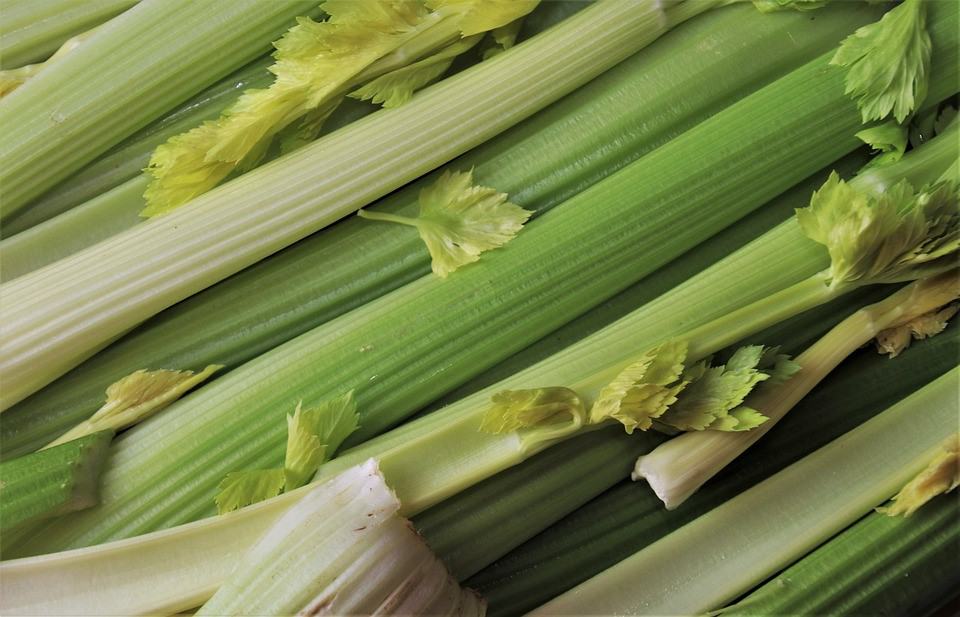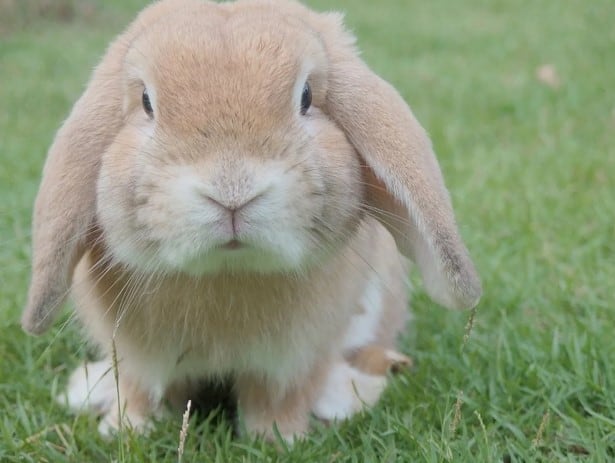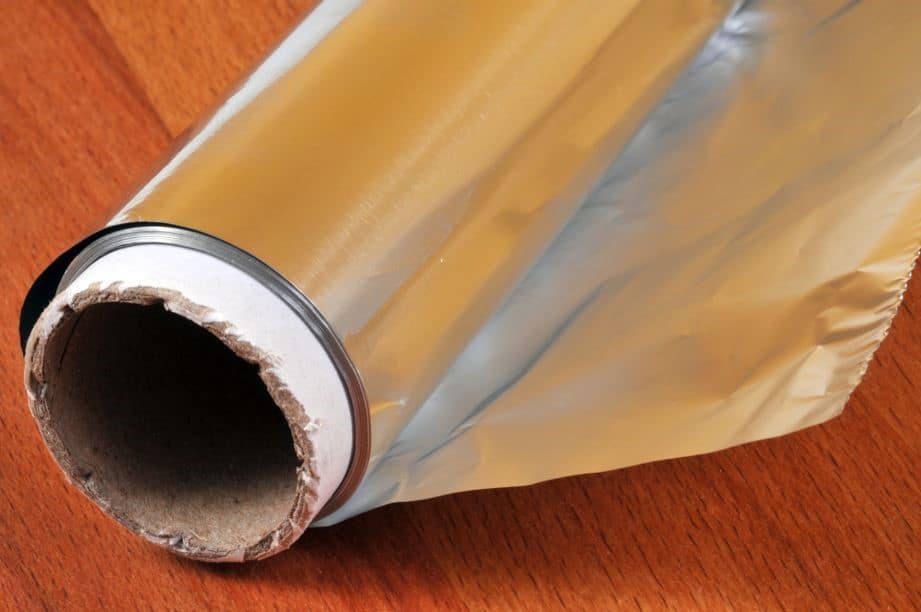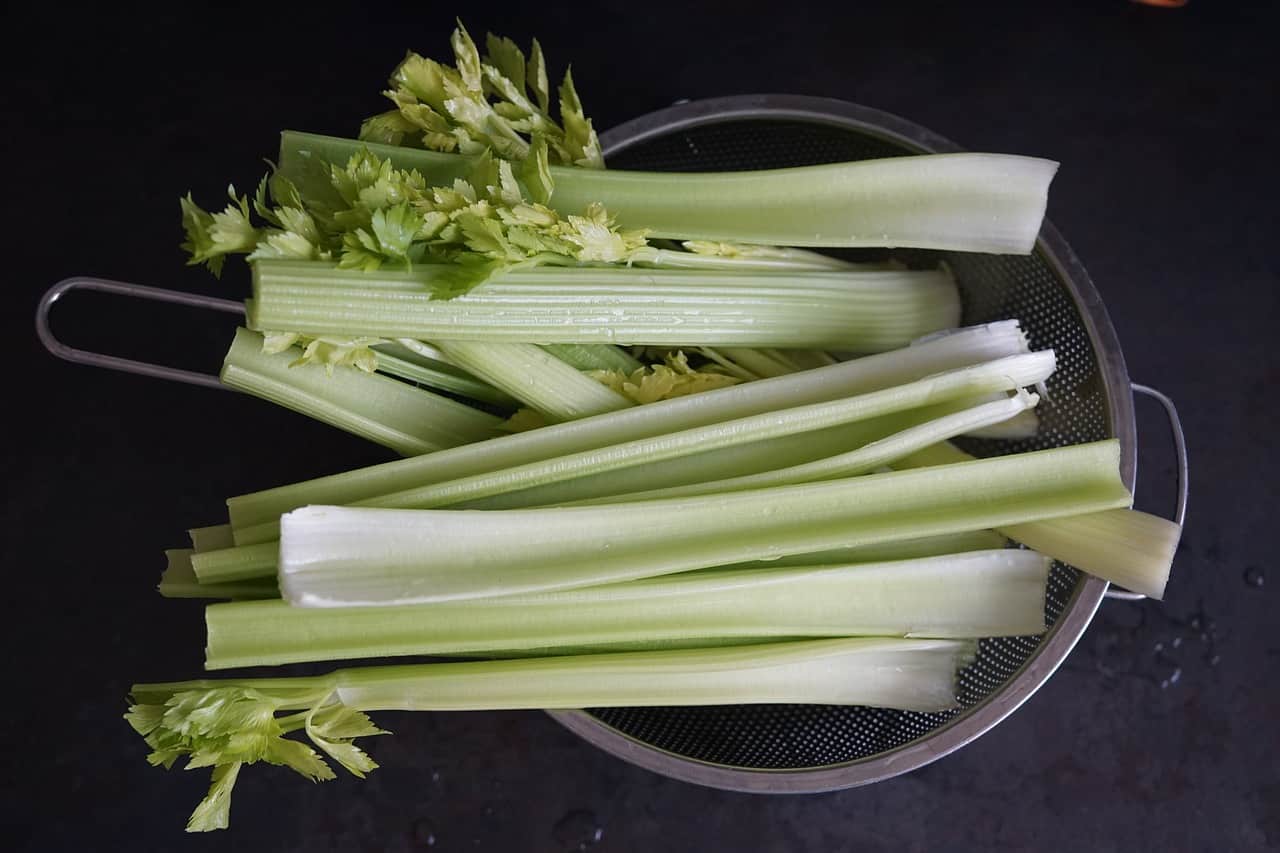Celery is often toted as a negative calorie food – food that consumes more calories digesting than what they would offer – and find use in a lot of diets for that quirk. While there aren’t any scientific studies that fully substantiate this myth, there’s no denying that celery makes for a great addition to most diets – be it for humans or animals.
Can rabbits eat celery? Rabbits are especially fond of celery, with its decent nutritional value and low glycemic index score being perfect for their sensitive stomachs. Overfeeding them celery isn’t as bad as it would be for other common treats, but it’s critical to make sure your rabbit is still eating all the hay their body needs.
Celery makes for one of the best treats for animals, and overfeeding them isn’t nearly as dangerous as it would be for other versions. There are a few things you’ll need to consider regardless, though.
Can Rabbits Eat Celery?
Celery Nutritional Information

Celery isn’t as nutritionally rich as most other fruits, but if we’re speaking on a per-volume basis, celery provides enough to supplement most vitamins we need.
What it does have in abundance are antioxidants. Antioxidants help lower the risk of inflammation and other types of cell damage. In particular, they inhibit the development of free radicals, which contribute greatly to coronary disease, cancer, and other common health issues.
Rabbits are known for their susceptibility to illness. Their bodies hinge on very specific balances in their gut bacteria. It’s very easy to throw off, and antioxidants play a huge role in mitigating the worst of the dangers. It’s also believed to aid their growth, but studies can’t fully corroborate that.
Celery is also rich in Vitamin K. Given a single cup can match about 30% of an average human’s dietary needs, it can easily match a rabbit’s daily intake. Vitamin K also reduces inflammation, but its primary boon is helping blood clot and improve injury recovery time.
An often overlooked aspect of celery is its water content – comprising over 90% of the vegetable. Rabbits especially need water, as most of their health risks come either from gut bacteria imbalances are dehydration. Being able to source their own water needs while also providing a means to wear down their teeth is ideal for rabbits.
Like tomatoes, celery is very rich in fiber – another vital component to maintaining a rabbit’s gut bacteria. Not only that, but the high fiber content also ensures your rabbit chews even more, helping them file down perpetually growing teeth.
The low sugar content allows celery to be eaten in bulk, as unlike common treats like apples (which goats love!) or even the iconic carrot, celery is very low scoring in the glycemic index.
These two factors are primarily what lets celery be eaten in huge quantities without upsetting your rabbit’s sensitive gut bacteria, on top of helping them maintain their bulky teeth.
Celery falls short as a staple food, though. You’re welcome to feed your rabbit a lot of celery, but it won’t meet all of their nutritional needs. Furthermore, the more celery they eat, the less space they’ll have for hay.
Ensure that their usual hay makes up at least 75% of their meal plans, but other than that, celery doesn’t pose that much danger beyond complacency. It isn’t nutritionally rich but makes for a welcome addition to any rabbit’s diet.
What Do Rabbits Think About Celery?

Rabbits adore celery! It’s sweet enough for them to enjoy, but not to the point of ruining their sensitive stomachs – at least in normal quantities. The texture is also great for them, helping keep their teeth from growing too long and causing pretty bad pain.
If enabled, rabbits will gleefully chomp down on more celery than they really should. It’s not necessarily as bad as one would expect. More treats given to animals are usually brimming with sugar, but celery keeps it relatively manageable. The only reason it’s bad is that there’s less room for the hay and pellets that they actually need for nutrition.
The good thing is rabbits aren’t especially aggressive animals. Bunnies are sociable by nature and work well in communal feeders. Leaving a trough of celery out is a perfectly suitable method to feed your colony. That said, try to limit its availability so as not to compete with their hay.
Celery Strings and Sensitivity
Celery Strings are a No-Go
Rabbits can chomp on celery stalks and leaves with no real issue. The only problematic part of the vegetable is the string, which makes up the outer layer most people peel off before serving.
Celery strings can actually be eaten, but uncooked celery string is very tough to chew. It either catches on teeth, slows down the chewing process, has a chance to pass through the digestive system, and even poses a notable choking hazard in its natural state.
Rabbits can’t eat cooked celery, which effectively renders the strings inedible for them. Rabbits are in grave danger if they choke due to their very fragile neck and spine. Treating a choking rabbit usually requires veterinarian assistance which is rarely available during an emergency.
The common method used for clearing rabbit blockages hinges on gravity which proves unreliable. This further compounds due to the nature of celery strings – being long, spindly, and likely wedged uncomfortably in their gullet. On a more mundane note, the strings can simply lodge between their teeth and cause serious discomfort.
When handling celery, make sure to peel away every shred of tough string around the stalk. You could boil and eat the remnants, or even turn them into compost for your garden.
Sensitivity Training
Rabbit stomachs are very easy to upset. They don’t have the digestive system we normally expect. They have more in common with cows, featuring a cecum that functions similarly to a rumen. Both of these organs contain very sensitive bacteria that stunt their digestion when inhibited, leading to bloating and other dangers.
When introducing a new food, there are no exceptions. Make sure to provide only small quantities of new meals to avoid agitating their digestive system. Simply increase serving size over time until it comprises their adult needs – the maximum should only be a quarter of their normal feeds.
This goes doubly so for baby rabbits, as their systems are even more susceptible to duress. They can be given green vegetables at around two months of age, but watch for potential upsets. If you’re trying to gauge their response to celery, only provide them celery until you can ascertain it poses no risk for the rabbit.
How Often Should You Give Them Celery? How Much?

It’s a bit difficult to say if you’re also feeding them other greens. If we’re working off a total ratio, it works off body weight: one cup of greens to every 5 pounds of body weight per day, adjusted accordingly. Feel free to add as much celery into the mix as you please provided the total sum of greenery falls under that restriction.
Ideal Properties of your Celery
When you’re out buying celery, it’s important to pick out the best stock. There are a lot of factors that go into this, with the great points having a bit more impact on your rabbit’s needs.
The easiest factor to skim for is color. Celery stalks are best found a shade of bright green all around. Be wary of any discolorations or spots, as these indicate old or dried products. It’s not a health risk, but nutrition and general appeal will both be lost.
The opposite end of the spectrum may also be a concern. Most fruits and vegetables have glossy, clean sheens despite days exposed in the open supermarket shelves. This is due to a process known as waxing where the products are coated in artificial wax to reduce oxidation and general exposure damages. The artificial wax doesn’t render the vegetable inedible, but it might make rabbits ill. You’ll still want to clean their vegetables thoroughly regardless.
As much as possible, source your celery organically to avoid this. You could even grow it yourself! Celery usually takes three to four months to grow but can regenerate its old stalks over time. It wouldn’t be a shabby investment if you plan on keeping your rabbits for a good while.
The stalks themselves should be firm and robust. You want dense, crunchy treats for your rabbit. Subjecting them to a snap test would be a good choice – if it breaks cleanly, you’ve got a good batch. Bending means you’ve got rubbery stalks. Rubbery stalks are bad signs on a celery plant, being both less nutritious and enjoyable for your bunnies.
Green leaves are also an excellent sign. In fact, most of the nutrition in celery is actually in the leaves. Don’t toss them away! Try to feed your rabbits bright, green leaves as soon as you buy them, as they go bad much quicker than celery stalks.
Storing, Preparing, and Reviving Celery
Storing

Usually, celery is taken home in clear plastic bags. While it might seem like a good idea to just bundle it up as is, the wrapping traps a ripening agent called ethylene. This gas also lowers your celery’s moisture content and makes your produce more likely to spoil.
Instead, wrap them in aluminum foil. It’s much better than plastic at keeping moisture in, on top of allowing the ripening ethylene gases to escape. Just be sure not to fold the edges too tight so the ripening agent can be released gradually.
Celery can be stored in a lot of different places. Room temperature also works for the plant for about a week. The fridge is better for long-term use though and can keep for almost a month with no real consequences. Avoid using the freezer, because the dethawed product will be a limp, tasteless mess no matter how recently you packed it in there.
Storage depends on your usual celery turnover rate, but we’d recommend refrigeration to keep your rabbit’s celery needs tided over.
Preparing
Don’t cut the celery until you’re serving it. This also extends to washing the produce. Both of these processes are detrimental to the nutrition and crispness of your celery. Just tuck them into aluminum foil and keep them ready until needed.
The celery stalk base will probably have a few brown stains. This is because the soil was trapped there during the growing period. Wash it off thoroughly or just avoid eating the bottom altogether. A produce scrub might be able to do some work, though it isn’t strictly necessary.
Use cold water to maintain its crispness. If you’re worried about contaminants, a mixture of 4 parts water and 1 part vinegar can do the trick for most common risks. You could even use apple cider vinegar, which also makes for a great supplement to give domestic rabbits.
Lastly, don’t ever give your rabbits cooked celery. Their digestive system can’t process cooked vegetables properly. Even if they could, their gut bacteria is so sensitive that it would still shock their systems.
Cooked celery also gets rid of the most appealing aspects of it for rabbits. It losses a lot of nutrition, crispness, sweetness, and moisture content. Even boiling is out of the question. Cooked celery is much less enticing for rabbits. Even the least damaging methods like steaming still lead to too much of a marked decrease in crunchiness for their enjoyment.
Reviving

Celery past its prime can still be salvaged. If done properly, the method can even recover most of its crispness. The process is easy and relatively straightforward: soak it in water.
Celery is over 90% water, with most storage choices taking into account the need to maintain its moisture level. Dunking them in water for a good while can bring them back enough to be fit for consumption. Ice water in particular makes for a great choice and can help recover that crunch rabbits desire. Just pat dry after leaving them to soak for a few hours, and you’re golden.
Common Risks
One of the more common occurrences is shocking their digestive systems. Because of the celery’s high water content, rabbits may develop gastrointestinal problems such as diarrhea. Moreover, rabbits rely on sensitive gut bacteria that are very easy to throw off balance. This is why you have to be careful of what you feed to rabbits; even foods that are more than nutritious for them like celery are liable to cause them discomfort if introduced abruptly.
Older rabbits will be more capable of pacing themselves. It’s the babies that will have a rough time there and gleefully gorge themselves bloated. Celery needs to be introduced around the three or four-month mark of their lives, in small but gradually increasing increments.
The high water content of the celery may cause gastrointestinal problems to rabbits.
Cooked vegetables are a no-go because rabbits can’t digest them properly. Only serve them raw celery after thorough washes. Common methods will ruin nutrition, and the few that don’t will detrimentally affect the texture rabbits need for their food.
Lastly, celery strings are a choking hazard. Rabbits can’t really have blockages in their throat dislodged by us due to their fragile spines and necks. Rabbits also don’t have the right instincts when picked up – unlike dogs and occasionally cats – and will thrash around with their powerful legs. It’s very common for them to snap their spine in the struggle, especially when held firm.
Make sure you remove any trace of string in their celery. It could also get stuck in their teeth, causing egregious discomfort for the bunny. Boiling them is also out of the question for previous reasons, so just be sure to pluck any errant string away from their celery pile.
Fortunately, celery isn’t dangerous in larger quantities. Its low glycemic index and sugar content put it in a unique position as far as treats go. The only real danger from too much celery is that your rabbit won’t have enough room for the hay they need.
Final Thoughts
Celery makes for a great treat for rabbits on top of giving them something to chew on. It provides a great outlet for stress relief on top of being nutritious and is a must-have for your rabbit’s feed. Just be sure not to shock their systems, and avoid serving them cooked celery. Other than those concerns, celery makes for a great all-around treat for most of their needs.

